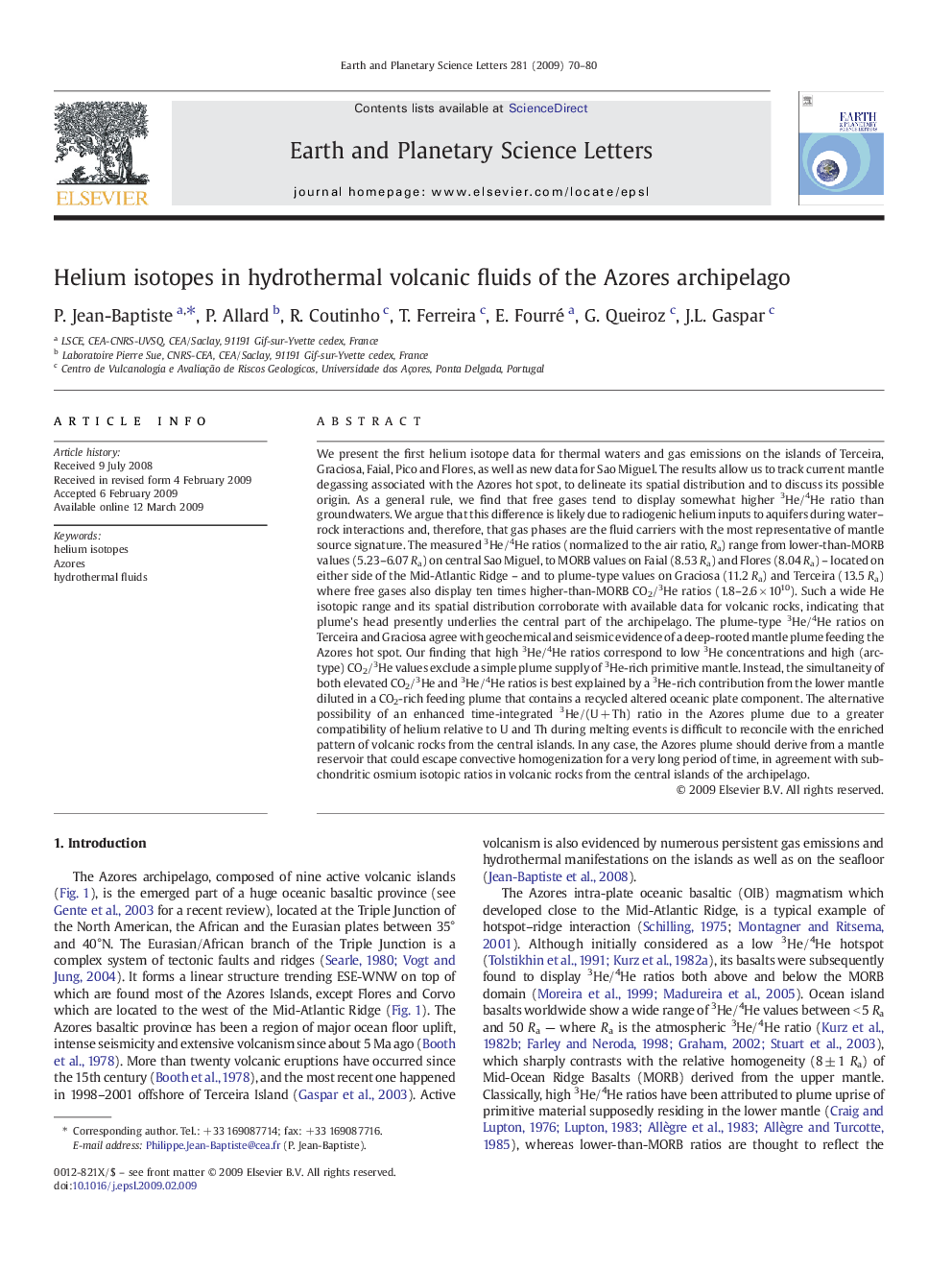| کد مقاله | کد نشریه | سال انتشار | مقاله انگلیسی | نسخه تمام متن |
|---|---|---|---|---|
| 4679228 | 1634875 | 2009 | 11 صفحه PDF | دانلود رایگان |
عنوان انگلیسی مقاله ISI
Helium isotopes in hydrothermal volcanic fluids of the Azores archipelago
دانلود مقاله + سفارش ترجمه
دانلود مقاله ISI انگلیسی
رایگان برای ایرانیان
موضوعات مرتبط
مهندسی و علوم پایه
علوم زمین و سیارات
علوم زمین و سیاره ای (عمومی)
پیش نمایش صفحه اول مقاله

چکیده انگلیسی
We present the first helium isotope data for thermal waters and gas emissions on the islands of Terceira, Graciosa, Faial, Pico and Flores, as well as new data for Sao Miguel. The results allow us to track current mantle degassing associated with the Azores hot spot, to delineate its spatial distribution and to discuss its possible origin. As a general rule, we find that free gases tend to display somewhat higher 3He/4He ratio than groundwaters. We argue that this difference is likely due to radiogenic helium inputs to aquifers during water-rock interactions and, therefore, that gas phases are the fluid carriers with the most representative of mantle source signature. The measured 3He/4He ratios (normalized to the air ratio, Ra) range from lower-than-MORB values (5.23-6.07 Ra) on central Sao Miguel, to MORB values on Faial (8.53 Ra) and Flores (8.04 Ra) - located on either side of the Mid-Atlantic Ridge - and to plume-type values on Graciosa (11.2 Ra) and Terceira (13.5 Ra) where free gases also display ten times higher-than-MORB CO2/3He ratios (1.8-2.6Â ÃÂ 1010). Such a wide He isotopic range and its spatial distribution corroborate with available data for volcanic rocks, indicating that plume's head presently underlies the central part of the archipelago. The plume-type 3He/4He ratios on Terceira and Graciosa agree with geochemical and seismic evidence of a deep-rooted mantle plume feeding the Azores hot spot. Our finding that high 3He/4He ratios correspond to low 3He concentrations and high (arc-type) CO2/3He values exclude a simple plume supply of 3He-rich primitive mantle. Instead, the simultaneity of both elevated CO2/3He and 3He/4He ratios is best explained by a 3He-rich contribution from the lower mantle diluted in a CO2-rich feeding plume that contains a recycled altered oceanic plate component. The alternative possibility of an enhanced time-integrated 3He/(UÂ +Â Th) ratio in the Azores plume due to a greater compatibility of helium relative to U and Th during melting events is difficult to reconcile with the enriched pattern of volcanic rocks from the central islands. In any case, the Azores plume should derive from a mantle reservoir that could escape convective homogenization for a very long period of time, in agreement with sub-chondritic osmium isotopic ratios in volcanic rocks from the central islands of the archipelago.
ناشر
Database: Elsevier - ScienceDirect (ساینس دایرکت)
Journal: Earth and Planetary Science Letters - Volume 281, Issues 1â2, 30 April 2009, Pages 70-80
Journal: Earth and Planetary Science Letters - Volume 281, Issues 1â2, 30 April 2009, Pages 70-80
نویسندگان
P. Jean-Baptiste, P. Allard, R. Coutinho, T. Ferreira, E. Fourré, G. Queiroz, J.L. Gaspar,